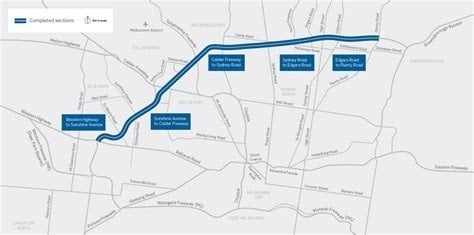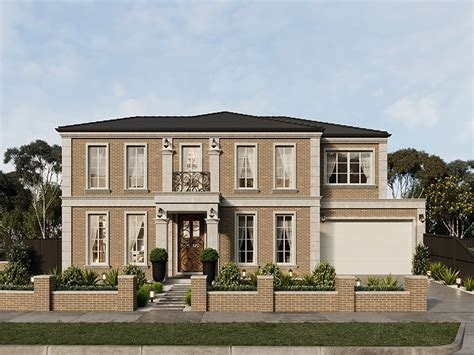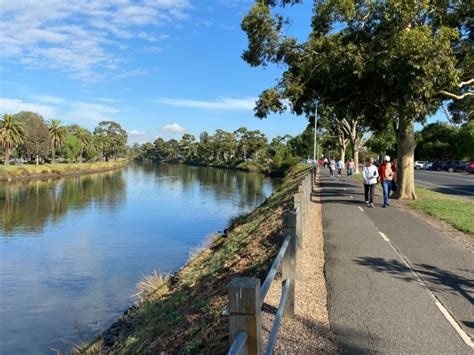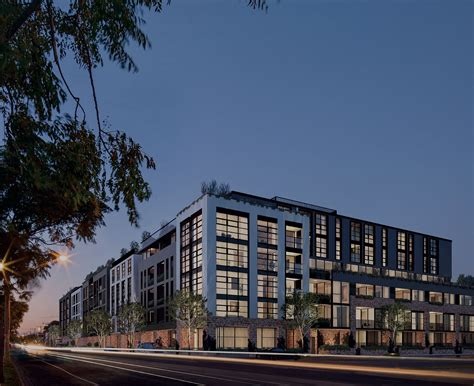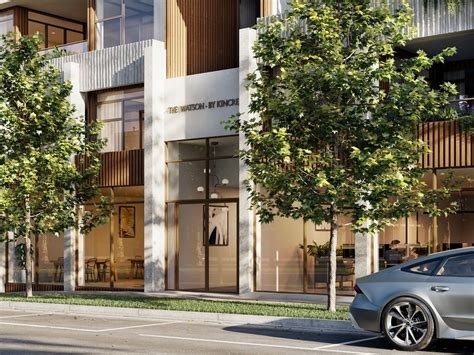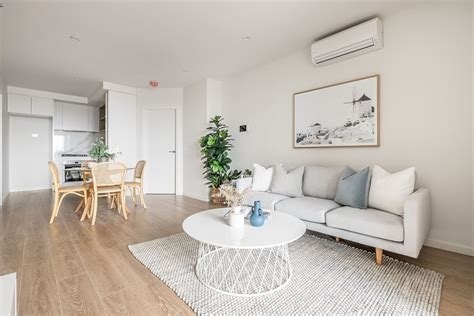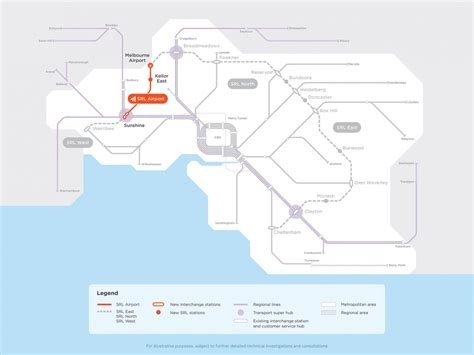Chart Color Schemes
est. as @ -- *
ABS ERP | -- people | --
2021 Census | -- people
Sales Activity
Curious about local property values? Filter the chart to assess the volume and appreciation (including resales) trends and regional comparisons, or scroll to the map below view this information at an individual property level.
Find a Recent Sale
Sales Detail
Population
An assessment of population growth drivers in Keilor East reveals an overall ranking slightly below national averages considering recent, and medium term trends
Keilor East's population was approximately 15,073 as of Aug 2021. By June 2024, it had increased to around 15,503, reflecting a growth of 440 people (2.9%) since the 2021 Census. This increase is attributed to an estimated resident population figure from ABS and 64 validated new addresses since the Census date. As of Aug 2025, the population is projected around 15,513. The population density ratio stands at approximately 2,830 persons per square kilometer, placing Keilor East in the upper quartile compared to national locations assessed by AreaSearch. Between Aug 2021 and 2041, a population increase of just below the median for statistical areas is expected, with an anticipated growth of 1,085 persons over the period, representing a total gain of 6.9%.
AreaSearch is adopting ABS/Geoscience Australia projections for each SA2 area, as released in 2024 with 2022 as the base year. For any SA2 areas not covered by this data, AreaSearch is utilising the VIC State Government's Regional/LGA projections released in 2023 with adjustments made employing a method of weighted aggregation of population growth from LGA to SA2 levels. Growth rates by age group from these aggregations are also applied across all areas for years 2032 to 2041. Moving forward with demographic trends, a population increase just below the median of national statistical areas is expected, with the area expected to grow by 1,085 persons to 2041 based on the latest population numbers, recording a gain of 6.9% in total over the 17 years.
Frequently Asked Questions - Population
Development
Recent residential development output has been above average within Keilor East when compared nationally
Keilor East has seen approximately 119 new homes approved annually. Development approval data is produced by the Australian Bureau of Statistics on a financial year basis, totalling 598 approvals from fiscal year 2020 to fiscal year 2025, with 13 recorded so far in fiscal year 2026. Over these five years, an average of 0.0 new residents per year has been arriving for each new home approved, indicating that new supply is meeting or exceeding demand and providing ample buyer choice while creating capacity for population growth beyond current forecasts. The average value of new dwellings developed is $660,000, which is moderately above regional levels, suggesting an emphasis on quality construction.
There have been $1.1 million in commercial approvals this financial year, indicating a predominantly residential focus. Compared to Greater Melbourne, Keilor East shows comparable new home approvals per person, preserving market equilibrium consistent with surrounding areas. New development consists of 37.0% standalone homes and 63.0% attached dwellings, reflecting a shift towards higher-density living that creates more affordable entry points for downsizers, investors, and first-home buyers. This represents a significant change from the current housing mix of 80.0% houses, likely due to reduced availability of development sites and shifting lifestyle demands and affordability requirements. With around 179 people per dwelling approval, Keilor East shows characteristics of a low-density area.
Future projections indicate that Keilor East will add approximately 1,069 residents by the year 2041. Based on current development patterns, new housing supply should readily meet demand, offering good conditions for buyers and potentially facilitating population growth beyond current projections.
Frequently Asked Questions - Development
Infrastructure
Keilor East has very high levels of nearby infrastructure activity, ranking in the top 10% nationally
Infrastructure changes significantly influence an area's performance. AreaSearch has identified seven projects likely impacting the region. Notable projects include Valley Lake Estate, Niddrie (Keilor Road) Activity Centre Plan, North Essendon Activity Centre Plan, and The Watson by Kincrest. Relevant projects are detailed below.
Professional plan users can use the search below to filter and access additional projects.
INFRASTRUCTURE SEARCH
Frequently Asked Questions - Infrastructure
Melbourne Airport Rail (SRL Airport)
15km rail line from Melbourne Airport to Sunshine Station via Metro Tunnel. Includes new Sunshine Station upgrade, Airport Central station, and integration with existing rail network for improved connectivity.
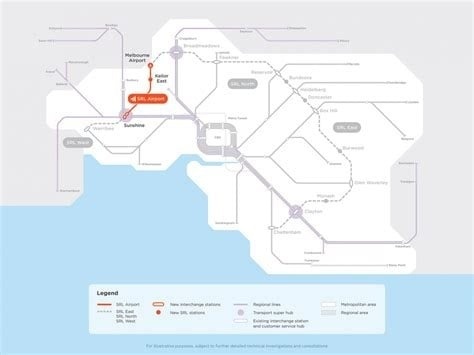
Sunshine Precinct Development
Comprehensive 30-year urban renewal plan to transform Sunshine into major activity centre. Includes mixed-use developments, transport improvements, health and education precinct expansion, and 50,000 new jobs by 2055. Leverages Melbourne Airport Rail connection. The precinct includes the completed Brimbank Community and Civic Centre (2016) which houses council offices, community facilities, and a 350-seat auditorium.
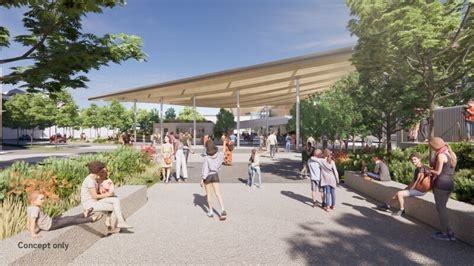
Sunshine Precinct Vision 2050
Comprehensive urban renewal strategy to transform Sunshine into Melbourne's western CBD. Anticipates 43,000 additional residents, 29,000 new jobs by 2051, and up to $8 billion investment potential across three hubs: Sunshine Station, Sunshine CBD, and Albion Quarter.
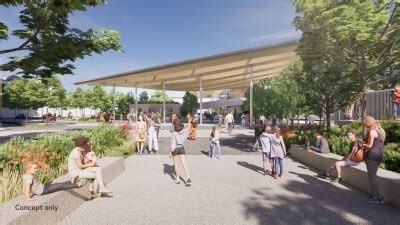
Niddrie (Keilor Road) Activity Centre Plan
The Niddrie (Keilor Road) Activity Centre Plan is part of Victorias Activity Centre Program to unlock new homes by 2051, with Niddrie contributing at least 3,400 new homes. It facilitates increased housing supply, diversity, and infrastructure delivery near transport, jobs, and services, with mixed-use developments up to 10 storeys in core areas.
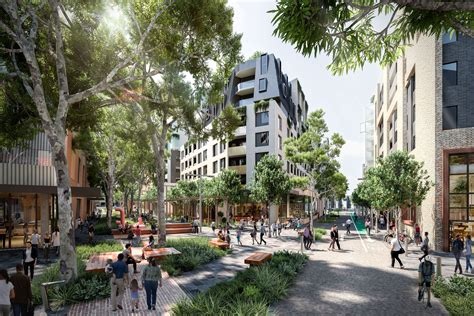
Hart Precinct
A 30-hectare greenfield light industrial estate located within 15 minutes of Melbourne CBD, officially opened in February 2025. Named after aviation pioneer James Bob Hart. The precinct offers aviation, commercial, and light industrial development opportunities with modern hangar facilities and business infrastructure. Stage 1 features custom-built facilities for tenants including Autex Industries 50 million manufacturing facility, Modscapes 20,000 sqm modular construction facility, and Dutton Wholesales vehicle storage operations. Part of the transformation of Essendon Fields into a thriving mixed-use commercial hub with access to retail, amenities, and green spaces.
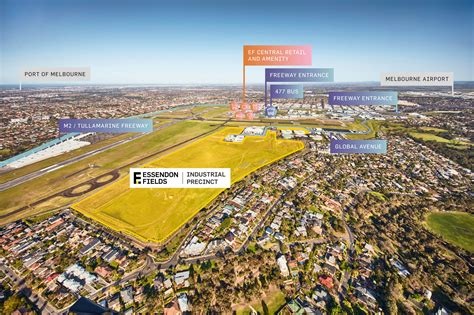
Joan Kirner Women's and Children's Hospital
A $200 million, 9-storey specialist women's and children's hospital on the Sunshine Hospital campus. Named after Victoria's first female premier, the facility features 237 beds, 20 maternity delivery rooms, 39 special care nursery cots, 4 birthing pools, 4 operating theatres, NICU (western suburbs' first neonatal intensive care unit), and dedicated accommodation rooms. Designed by Lyons Architecture with salutogenic principles to promote healing and wellbeing. Opened May 2019 to serve Melbourne's growing western suburbs with world-class maternity and paediatric services.
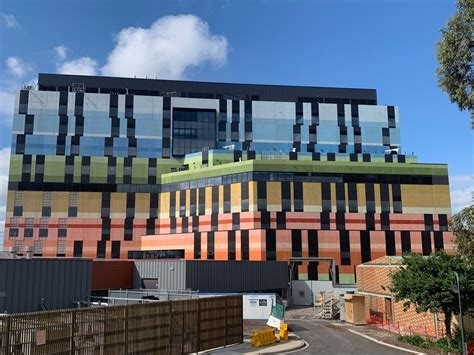
North Essendon Activity Centre Plan
The North Essendon Activity Centre Plan, developed by the Victorian Planning Authority, aims to unlock approximately 5,100 new homes by 2051 along the Mount Alexander Road corridor. It focuses on medium to high-density housing development, improved connectivity, and infrastructure upgrades to support population growth in established suburbs while maintaining community character.
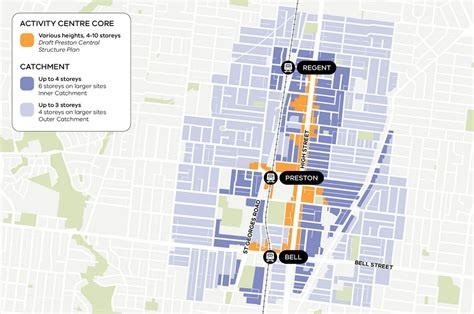
Valley Lake Estate
Masterplanned residential renewal on the former Niddrie Quarry (approx. 48 ha) delivered by Development Victoria. Around 573 homes, 30% open space, lakeside boardwalk, Valley Lake Lookout and a clifftop walkway with Steele Creek access. Estate assets and responsibilities progressively handed to Moonee Valley City Council with full handover late 2024/2025.
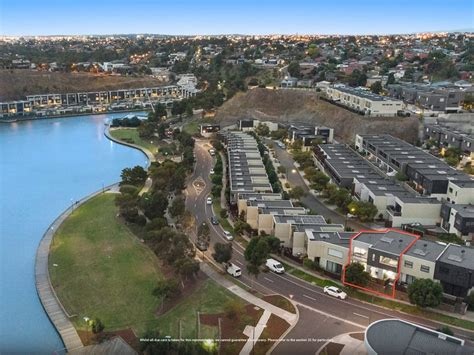
Employment
Keilor East ranks among the top 25% of areas assessed nationally for overall employment performance
Keilor East has a well-educated workforce with professional services being prominently represented. The unemployment rate in the area was 2.4% as of June 2025, which is lower than Greater Melbourne's rate of 4.6%.
Employment growth over the past year was estimated to be 4.0%. As of June 2025, there were 8,383 residents employed in Keilor East with an unemployment rate of 2.3%, significantly below Greater Melbourne's rate. Workforce participation in Keilor East is lower at 58.8% compared to Greater Melbourne's 64.1%. The key industries employing residents are health care & social assistance, construction, and education & training.
Notably, the area specializes in transport, postal & warehousing with an employment share of 1.3 times the regional level. However, health care & social assistance employs only 11.9% of local workers compared to Greater Melbourne's 14.2%. The predominantly residential area appears to offer limited local employment opportunities, as indicated by the census working population versus resident population count. Over the 12 months to June 2025, employment increased by 4.0%, labour force grew by 4.4%, resulting in a rise of unemployment by 0.3 percentage points. In comparison, Greater Melbourne recorded employment growth of 3.5% with unemployment rising by 0.5 percentage points. State-level data to Sep-25 shows Victoria's employment grew by 1.08% year-on-year adding 39,880 jobs, with the state unemployment rate at 4.7%, compared to the national rate of 4.5%. Jobs and Skills Australia's national employment forecasts from May 2025 suggest national employment will expand by 6.6% over five years and 13.7% over ten years. Applying these projections to Keilor East's employment mix suggests local growth of approximately 6.5% over five years and 13.3% over ten years.
Frequently Asked Questions - Employment
Income
The area exhibits notably strong income performance, ranking higher than 70% of areas assessed nationally through AreaSearch analysis
AreaSearch's latest postcode level ATO data for financial year 2022 shows that Keilor East has one of the highest incomes in Australia. The median income is $57,291 and the average income stands at $77,687. This contrasts with Greater Melbourne's figures where the median income is $54,892 and the average income is $73,761. Based on a 10.11% growth in wages since financial year 2022, current estimates would be approximately $63,083 (median) and $85,541 (average) as of March 2025. According to Census 2021 income data, household income ranks at the 60th percentile ($1,913 weekly), while personal income sits at the 40th percentile. Income distribution shows that the $1,500 - 2,999 bracket dominates with 30.2% of residents (4,684 people). After housing costs, residents retain 87.2% of their income, reflecting strong purchasing power. The area's SEIFA income ranking places it in the 6th decile.
Frequently Asked Questions - Income
Housing
Keilor East is characterized by a predominantly suburban housing profile, with above-average rates of outright home ownership
Keilor East's dwelling structures, as per the latest Census, were 80.5% houses and 19.4% other dwellings (semi-detached, apartments, 'other' dwellings), compared to Melbourne metro's 70.8% houses and 30.2% other dwellings. Home ownership in Keilor East stood at 47.4%, with mortgaged dwellings at 33.5% and rented ones at 19.1%. The median monthly mortgage repayment was $2,167, aligning with Melbourne metro's average, while the median weekly rent was $408, slightly higher than Melbourne metro's $410. Nationally, Keilor East's mortgage repayments exceeded the Australian average of $1,863, and rents were above the national figure of $375.
Frequently Asked Questions - Housing
Household Composition
Keilor East features high concentrations of family households, with a fairly typical median household size
Family households constitute 77.7% of all households, including 37.8% couples with children, 26.5% couples without children, and 12.3% single parent families. Non-family households account for 22.3%, with lone person households at 20.2% and group households comprising 2.1%. The median household size is 2.6 people, which aligns with the Greater Melbourne average.
Frequently Asked Questions - Households
Local Schools & Education
The educational profile of Keilor East exceeds national averages, with above-average qualification levels and academic performance metrics
Keilor East's educational qualifications exceed regional benchmarks. Among residents aged 15 and above, 29.1% hold university degrees, compared to Greater Melbourne's 37.0%. Bachelor degrees are most common at 20.6%, followed by postgraduate qualifications (5.5%) and graduate diplomas (3.0%). Vocational credentials are also prevalent, with 28.4% of residents holding such qualifications - advanced diplomas at 10.2% and certificates at 18.2%.
Educational participation is high, with 27.1% of residents currently enrolled in formal education. This includes 9.1% in primary, 8.1% in secondary, and 4.8% in tertiary education. Keilor East's four schools have a combined enrollment of 4,402 students. The suburb demonstrates above-average socio-educational conditions (ICSEA: 1078). Educational institutions include two primary schools, one secondary school, and one K-12 school.
Frequently Asked Questions - Education
Schools Detail
Nearby Services & Amenities
Transport
Transport servicing is high compared to other areas nationally based on assessment of service frequency, route connectivity and accessibility
Keilor East has 62 active public transport stops, all of which are bus stops. These stops are served by 8 different routes that together facilitate 6,468 weekly passenger trips. The accessibility of these services is rated as good, with residents on average being located just 204 meters from the nearest stop.
Across all routes, there are an average of 924 daily trips, which translates to approximately 104 weekly trips per individual stop.
Frequently Asked Questions - Transport
Transport Stops Detail
Health
Keilor East's residents are relatively healthy in comparison to broader Australia with a fairly standard level of common health conditions seen across both young and old age cohorts
Keilor East's health metrics closely align with national benchmarks.
Common health conditions are seen at standard levels across both young and old age cohorts. Private health cover is exceptionally high, with approximately 59% of the total population (9121 people) having it. The most common medical conditions are arthritis and asthma, affecting 8.0% and 6.8% of residents respectively. 69.9% of residents declare themselves completely clear of medical ailments, compared to 70.1% across Greater Melbourne. There are 22.3% (3464 people) of residents aged 65 and over, broadly in line with the general population's health profile.
Frequently Asked Questions - Health
Cultural Diversity
Keilor East was found to be more culturally diverse than the vast majority of local markets in Australia, upon assessment of a range of language and cultural background related metrics
Keilor East has a higher cultural diversity compared to most local markets, with 30.0% of its population born overseas and 34.5% speaking a language other than English at home. Christianity is the predominant religion in Keilor East, accounting for 69.1% of its population, slightly higher than Greater Melbourne's 66.4%. The top three ancestry groups based on parents' country of birth are Italian (19.3%), Australian (16.5%), and English (15.7%).
Notably, Croatian (1.8%) is overrepresented compared to the regional average of 2.0%, as are Greek (5.8% vs 5.0%) and Maltese (2.7% vs 2.8%).
Frequently Asked Questions - Diversity
Age
Keilor East hosts an older demographic, ranking in the top quartile nationwide
The median age in Keilor East is 43 years, significantly higher than Greater Melbourne's average of 37 years and the national average of 38 years. The age profile shows that individuals aged 75-84 are particularly prominent, making up 9.2% of the population, while those aged 25-34 comprise only 10.2%. Between 2021 and the present, the proportion of individuals aged 15-24 has grown from 10.7% to 12.2%, while those aged 85 and above have increased from 3.4% to 4.5%. Conversely, the proportion of individuals aged 65-74 has decreased from 9.8% to 8.7%. By 2041, demographic projections indicate significant shifts in Keilor East's age structure. The 55-64 age cohort is projected to increase by 33%, growing from 1,808 people to 2,401. Conversely, both the 75-84 and 0-4 age groups are expected to see reduced numbers.
